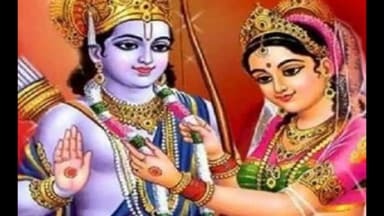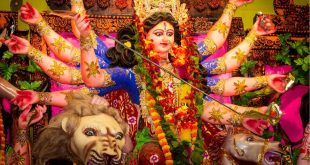
Sita Navami: Celebrating the Divine Birth of Mata Sita
Sita Navami, also known as Janaki Navami, marks the birth of Mata Sita, a central figure in the Hindu epic Ramayana. This day is celebrated with great reverence across India, particularly because Sita is considered an avatar of the goddess Lakshmi and embodies purity and sacrifice. The festival occurs on Vaishakha Shukla Navami and holds immense spiritual significance.
The Significance of Sita Navami Sita Navami is not just a religious observance but a celebration of virtues Sita represents—dedication, purity, and sacrifice. As the consort of Lord Rama, her character and virtues are discussed in various scriptures, making this day a profound cultural and spiritual event.
The Story of Mata Sita’s Birth According to mythology, during a severe drought in Mithila, King Janak plowed the earth, and from the furrow, emerged a divine girl, Sita, encapsulated in a golden casket. This miraculous event is celebrated on Sita Navami. Her birth brought prosperity back to Mithila, showcasing her divine influence from the very beginning.
Observance of Sita Navami In 2024, Sita Navami will begin on the morning of May 16 and conclude on May 17. Devotees observe fasts, perform puja, and recite Vedic hymns to honor Mata Sita. The most auspicious time for the puja is between 11:04 AM and 1:43 PM on May 16.
The Divine Characteristics of Mata Sita Mata Sita is revered for her unwavering fidelity and patience. Her life and sacrifices are significant teachings in Hindu dharma, highlighting virtues like devotion, purity, and moral integrity.
Sita Navami Celebrations Across India From the grand temples in the North to small shrines in the South, Sita Navami is celebrated with diverse rituals. In places like Ayodhya, Janakpur, and Sitamarhi, the celebrations are particularly elaborate, attracting thousands of pilgrims.
How to Prepare for Sita Navami Devotees clean their homes, set up altars, and gather all necessary items like flowers, fruits, and sweets for the puja. Traditional attire is worn, and the environment is filled with bhajans and prayers.
The Rituals of Sita Navami The rituals involve bathing early in the morning, observing a strict fast (if health permits), and conducting a detailed puja. The offerings to Mata Sita include fruits, flowers, and sweets, specifically prepared for this occasion.
Prayers and Mantras on Sita Navami Special prayers dedicated to Sita are chanted, including praises and mantras that highlight her virtues and seek her blessings for prosperity and happiness in the family.
Sita Navami and Its Social Significance This festival plays a crucial role in emphasizing the importance of women in Indian culture, promoting virtues such as purity, devotion, and sacrifice, which are seen as ideals for women in society.
The Lessons from Sita’s Life Mata Sita’s life offers numerous lessons in resilience, fidelity, and morality. Her life’s journey, from her divine birth to her trials in the forest, teaches devotion, strength, and endurance.
Charitable Acts on Sita Navami Giving charity on this day, especially in the form of earth (clay, pots, or seeds), is believed to be auspicious, reflecting Sita’s emergence from the earth. This act is said to bring blessings equivalent to visiting sacred sites.
Food and Offerings on Sita Navami Devotees prepare specific dishes like Panchamrit and distribute prasad among family and friends. Sharing food is a significant part of the celebration, symbolizing communal unity and love.
Sita Navami in Literature and Arts Mata Sita has been a subject of various literary works and artistic expressions. Her character has inspired countless interpretations in dance, drama, and art, reflecting her status as an eternal symbol of virtue and loyalty.
Sita Navami is a day to honor and remember the virtues of Mata Sita, whose life and sacrifices offer profound lessons. It is a day for reflection, prayer, and celebration of purity and devotion, embodying the essence of Hindu spirituality and cultural heritage.
 Suspense Crime Sach Ka Dam
Suspense Crime Sach Ka Dam


